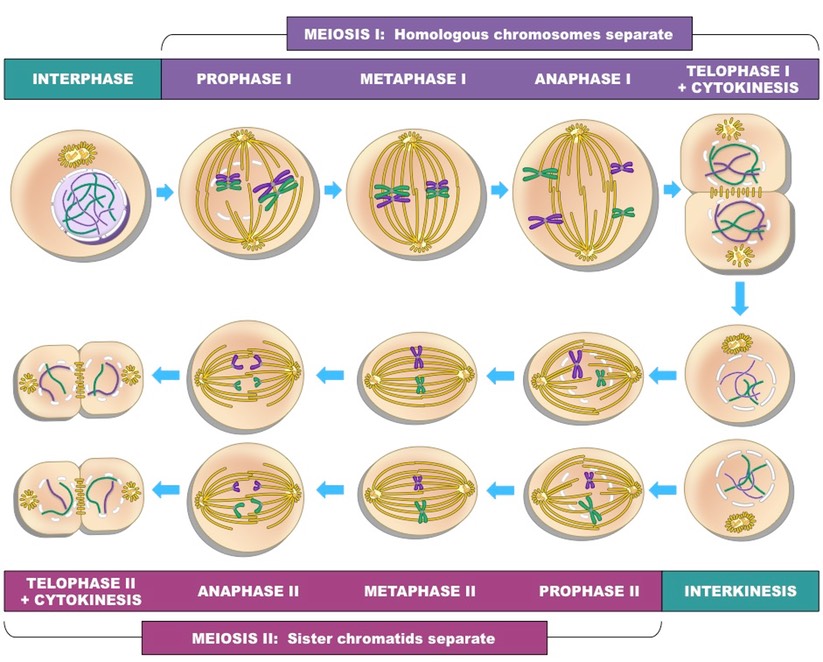![]()
Skill:
• Drawing diagrams to show the stages of meiosis resulting in the formation of four haploid cells
Meiosis consists of two divisions, both of which follow the same stages as mitosis (prophase, metaphase, anaphase, telophase)
- Meiosis is preceded by interphase, in which DNA is replicated to produce chromosomes consisting of two sister chromatids
- A second growth phase called interkinesis may occur between meiosis I and II, however no DNA replication occurs in this stage
Meiosis I
The first meiotic division is a reduction division (diploid → haploid) in which homologous chromosomes are separated
- P-I: Chromosomes condense, nuclear membrane dissolves, homologous chromosomes form bivalents, crossing over occurs
- M-I: Spindle fibres from opposing centrosomes connect to bivalents (at centromeres) and align them along the middle of the cell
- A-I: Spindle fibres contract and split the bivalent, homologous chromosomes move to opposite poles of the cell
- T-I: Chromosomes decondense, nuclear membrane may reform, cell divides (cytokinesis) to form two haploid daughter cells
Meiosis II
The second division separates sister chromatids (these chromatids may not be identical due to crossing over in prophase I)
- P-II: Chromosomes condense, nuclear membrane dissolves, centrosomes move to opposite poles (perpendicular to before)
- M-II: Spindle fibres from opposing centrosomes attach to chromosomes (at centromere) and align them along the cell equator
- A-II: Spindle fibres contract and separate the sister chromatids, chromatids (now called chromosomes) move to opposite poles
- T-II: Chromosomes decondense, nuclear membrane reforms, cells divide (cytokinesis) to form four haploid daughter cells
The final outcome of meiosis is the production of four haploid daughter cells
- These cells may all be genetically distinct if crossing over occurs in prophase I (causes recombination of sister chromatids)
Meiosis Overview

Animation of the Stages of Meiosis
